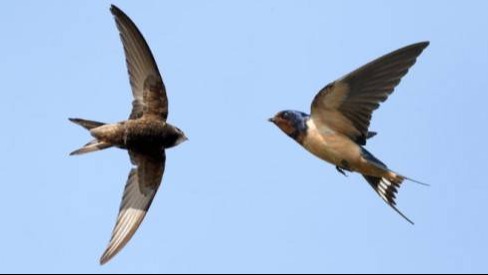Recent blogs
Recent blogs
Contact Supplier

BA HON NEST
1. Nicknamed the "Legless" Bird
- While capable of extremely fast flight, swiftlets' weakness lies in their incredibly weak and underdeveloped legs, making it almost impossible for them to perch on wires or antennas like many other birds. Additionally, the very name Apodidae (legless) also speaks to this identifying characteristic of this bird species.
2. Record Holders for the Fastest Flying Birds
- A recent survey of over 80 different species found that swiftlets are among the fastest flying birds in the world, with a maximum flight speed of up to 130-160 km/h. Despite having narrow wings, they are curved and soar continuously in the air for hours on end without resting.
3. The Rare Poultry Species That Has Never Contracted Avian Influenza
- Precisely due to their "legless" characteristic or never perching, swiftlets are not infected with avian influenza - instead of perching, they only hang suspended on vertical cliffs or nest ladders, making it extremely difficult for them to come into contact with the disease. To date, no swiftlet has been found to be infected with or at risk of avian influenza.
4. They Often Nest in the Dark...
Swiftlets often nest on vertical cliffs or inside houses, in places that are quite dark, with a light intensity of about 2 lux. This helps them avoid predators such as owls, bats, and other birds.
With their flocking nature and being very sensitive, most swiftlets nest in places where swiftlets have previously nested. This is because they believe that: "If their friends are there, then it means that the place is safe and suitable for further breeding."
5. An Extremely Sensitive Bird
- Swiftlets have an incredibly sensitive sense of smell, so they are very good at smelling and become extremely sensitive when they detect any unusual signs, no matter how small. This is also one of the things to note when building a swiftlet house: avoid strange smells in the house, remove the cement smell in a newly built house, and soundproof it well,...
6. Difficult to Raise and Harvest
- Although swiftlets are now commonly raised and sold throughout the country, harvesting and raising them effectively is not easy. It is precisely their extremely sensitive nature and tendency to feel anxious that can cause swiftlets to panic, fly around, bang their heads against the walls and die.
7. Short Breeding Cycle
- The time from when a swiftlet starts building a nest to when the fledglings can fly is about 115-132 days. Thus, in one year, a pair of swiftlets can nest about 2-3 times.
8. The Animals Swiftlets Fear Most
- Geckos, owls, red fire ants, cockroaches, termites, spiders, rats, centipedes,... are the animals that swiftlets fear most. Consider using tools to eliminate and prevent the appearance of these "uninvited guests" from your swiftlet house if you don't want the number of swiftlets to drop significantly.
9. Don't Confuse Swiftlets with Swallows
- Although they look very similar and live together, many people often mistake the two species for one. However, this is not the case. Swiftlets have black feathers, a small beak, an unsplit tail, weak legs, and never perch; while swallows have black or blue-black feathers, a larger beak than swiftlets, a split tail, strong legs, and often perch on wires.
10. Other Interesting Facts
Swiftlets are one of the very few birds that have the ability to hunt even while flying; they even have the ability to sleep and mate while flying.
There are many different species of swiftlets, and their nesting methods vary accordingly: some nest with feathers, some with grass or straw, and others with saliva. It is this saliva that forms the basis for the delicious and nutritious swiftlet's nest.
Swiftlets are extremely monogamous birds; they almost only have one "partner" throughout their lives.
According to experts, swiftlet's nest is a food with high nutritional value, helps to supplement nutrients, beautify the skin, and boost the immune system. In particular, swiftlet's nest can also reduce the risk of developing cancer or AIDS.




